Volume 10 | Number 2 | November 2021
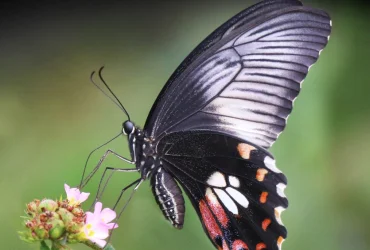 v10i2.270
v10i2.270ISSN: 1800-427X (printed)
eISSN: 1800-427X (online)
DOI:10.47605/tapro.v10i2.270
Submitted date: 28 May 2021
Published date: 22 November 2021
Pp. 146
ERRATUM :Amarasinghe, A.A.T., S. Karunarathna, M. Madawala, and A. de Silva (2021). Two new rupicolous day geckos of the Cnemaspis alwisi group (Reptilia: Gekkonidae) from Sri Lanka. Taprobanica, 10 (1): 23–38 + pls. 3–8.
eISSN: 1800-427X (online)
DOI:10.47605/tapro.v10i2.270
Submitted date: 28 May 2021
Published date: 22 November 2021
Pp. 146
ERRATUM :Amarasinghe, A.A.T., S. Karunarathna, M. Madawala, and A. de Silva (2021). Two new rupicolous day geckos of the Cnemaspis alwisi group (Reptilia: Gekkonidae) from Sri Lanka. Taprobanica, 10 (1): 23–38 + pls. 3–8.
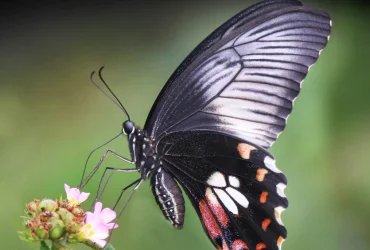 v10i2.269
v10i2.269ISSN: 1800-427X (printed)
eISSN: 1800-427X (online)
DOI:10.47605/tapro.v10i2.269
Submitted date: 26 August 2021
Published date: 22 November 2021
Pp. 140–145
LETTER TO EDITOR: A response to Narayanan et al. (2021) “On the validity of the recently described bush frog Raorchestes kollimalai Gowande, Ganesh & Mirza, 2020” published in Zootaxa
Zeeshan A. Mirza* & Gaurang Gowande
*E-mail: snakeszeeshan@gmail.com
Narayanan et al. (2021) make extremely grave allegations of ‘misrepresentation of data’ by Gowande et al. (2020). Narayanan et al. (2021) found serious flaws in the publication dealing with the description of Raorchestes kollimalai by Gowande, Ganesh & Mirza (2020). The authors state that Gowande et al. (2020) overlooked many errors, which consequently raises questions on the validity of R. kollimalai. We here respond to their comments, dispel their false allegations of misrepresentation of data and provide evidence for the validity of Raorchestes kollimalai. A common practice while writing a response/critique of a published paper is to contact the editor of the journal in which the paper was published, which, in this case, is TAPROBANICA. However, Narayanan et al. (2021) chose to publish their critique in a different journal, ZOOTAXA and thus, were unaware of the erratum to the paper on the new species. The erratum that was published in a recent issue of Taprobanica (Gowande et al. 2021) resolves some of the concerns raised by Narayanan et al. (2021). These concerns were a mistake on the part of Gowande et al. (2020) but by no means did the authors intend to hide or misrepresent data as accused by Narayanan et al. (2021).
eISSN: 1800-427X (online)
DOI:10.47605/tapro.v10i2.269
Submitted date: 26 August 2021
Published date: 22 November 2021
Pp. 140–145
LETTER TO EDITOR: A response to Narayanan et al. (2021) “On the validity of the recently described bush frog Raorchestes kollimalai Gowande, Ganesh & Mirza, 2020” published in Zootaxa
Zeeshan A. Mirza* & Gaurang Gowande
*E-mail: snakeszeeshan@gmail.com
Narayanan et al. (2021) make extremely grave allegations of ‘misrepresentation of data’ by Gowande et al. (2020). Narayanan et al. (2021) found serious flaws in the publication dealing with the description of Raorchestes kollimalai by Gowande, Ganesh & Mirza (2020). The authors state that Gowande et al. (2020) overlooked many errors, which consequently raises questions on the validity of R. kollimalai. We here respond to their comments, dispel their false allegations of misrepresentation of data and provide evidence for the validity of Raorchestes kollimalai. A common practice while writing a response/critique of a published paper is to contact the editor of the journal in which the paper was published, which, in this case, is TAPROBANICA. However, Narayanan et al. (2021) chose to publish their critique in a different journal, ZOOTAXA and thus, were unaware of the erratum to the paper on the new species. The erratum that was published in a recent issue of Taprobanica (Gowande et al. 2021) resolves some of the concerns raised by Narayanan et al. (2021). These concerns were a mistake on the part of Gowande et al. (2020) but by no means did the authors intend to hide or misrepresent data as accused by Narayanan et al. (2021).
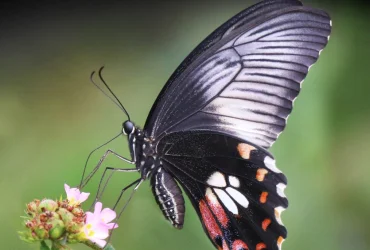 v10i2.268
v10i2.268ISSN: 1800-427X (printed)
eISSN: 1800-427X (online)
DOI:10.47605/tapro.v10i2.268
Submitted date: 16 August 2021
Accepted date: 9 September 2021
Published date: 22 November 2021
Pp. 138–139
An unusual roosting habit of a painted bat (Kerivoula picta) from Sri Lanka
R.K. de Mel*, A.P. Sumanapala, H.D. Jayasinghe, S.S. Rajapakshe & R.P. Nanayakkara
*E-mail: ruvinda_demel@hotmail.com
The painted bat, Kerivoula picta (Pallas, 1767) is considered one of the most aesthetically appealing bats in Sri Lanka with bright orange fur and black wings. However, very little information is available with regard to the ecology of this species in both local and global contexts. Of its roosting habits, Phillips (1980) reports that in Sri Lanka the bat is usually found roosting among banana leaves while it has been observed utilising tall grass species and even an abandoned nest of a Baya Weaver (Plocius philippinus) for this purpose. Here we report an observation of the species using a man-made artefact for roosting during the day.
Section Editor: Burton Lim
eISSN: 1800-427X (online)
DOI:10.47605/tapro.v10i2.268
Submitted date: 16 August 2021
Accepted date: 9 September 2021
Published date: 22 November 2021
Pp. 138–139
An unusual roosting habit of a painted bat (Kerivoula picta) from Sri Lanka
R.K. de Mel*, A.P. Sumanapala, H.D. Jayasinghe, S.S. Rajapakshe & R.P. Nanayakkara
*E-mail: ruvinda_demel@hotmail.com
The painted bat, Kerivoula picta (Pallas, 1767) is considered one of the most aesthetically appealing bats in Sri Lanka with bright orange fur and black wings. However, very little information is available with regard to the ecology of this species in both local and global contexts. Of its roosting habits, Phillips (1980) reports that in Sri Lanka the bat is usually found roosting among banana leaves while it has been observed utilising tall grass species and even an abandoned nest of a Baya Weaver (Plocius philippinus) for this purpose. Here we report an observation of the species using a man-made artefact for roosting during the day.
Section Editor: Burton Lim
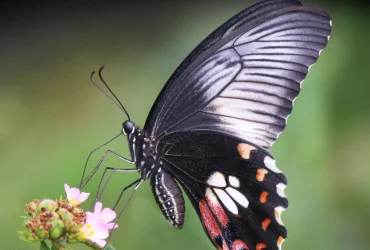 v10i2.267
v10i2.267ISSN: 1800-427X (printed)
eISSN: 1800-427X (online)
DOI:10.47605/tapro.v10i2.267
Submitted date: 24 May 2021
Accepted date: 9 September 2021
Published date: 22 November 2021
Pp. 135–137
Gliding behaviour of Indian giant flying squirrel (Petaurista philippensis)
D. Barthwal*, A.K. Jangid & N. Dharaiya
*E-mail: diksha.b1608@gmail.com
The Indian giant flying squirrel or large brown flying squirrel, Petaurista philippensis (Elliot, 1839) is one of 13 gliding squirrel species found in India. Nocturnal by nature, they have ability to glide up to 150 m. We studied its gliding habit in the human-modified landscape of the Kevdi ecotourism site (22.5198ºN, 73.9356ºE; Fig. 1), Panchmahal District, between two protected areas in Gujarat: Ratanmahal Sloth Bear Sanctuary and Jambughoda Wildlife Sanctuary. The Kevdi ecotourism site is a known locality of this species. Here, we present basic information on the gliding ecology of the species in the dry deciduous forests of central Gujarat.
Section Editor: Lee Harding
eISSN: 1800-427X (online)
DOI:10.47605/tapro.v10i2.267
Submitted date: 24 May 2021
Accepted date: 9 September 2021
Published date: 22 November 2021
Pp. 135–137
Gliding behaviour of Indian giant flying squirrel (Petaurista philippensis)
D. Barthwal*, A.K. Jangid & N. Dharaiya
*E-mail: diksha.b1608@gmail.com
The Indian giant flying squirrel or large brown flying squirrel, Petaurista philippensis (Elliot, 1839) is one of 13 gliding squirrel species found in India. Nocturnal by nature, they have ability to glide up to 150 m. We studied its gliding habit in the human-modified landscape of the Kevdi ecotourism site (22.5198ºN, 73.9356ºE; Fig. 1), Panchmahal District, between two protected areas in Gujarat: Ratanmahal Sloth Bear Sanctuary and Jambughoda Wildlife Sanctuary. The Kevdi ecotourism site is a known locality of this species. Here, we present basic information on the gliding ecology of the species in the dry deciduous forests of central Gujarat.
Section Editor: Lee Harding
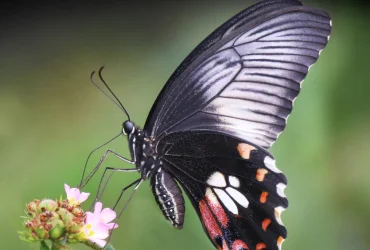 v10i2.266
v10i2.266ISSN: 1800-427X (printed)
eISSN: 1800-427X (online)
DOI:10.47605/tapro.v10i2.266
Submitted date: 23 March 2021
Accepted date: 11 September 2021
Published date: 22 November 2021
Pp. 133–134
A breeding record of the brown hawk owl (Ninox scutulata) in Assam, India
S.P. Ranade*
*E-mail: s.ranade@bnhs.org
The brown hawk owl, Ninox scutulata (Raffles, 1822) is a common, medium sized bird of prey on the Indian subcontinent and listed as of least concern. Its distribution range extends up to eastern Siberia, Japan, the Andmans, the Malay Peninsula, the Great and Lesser Sundas, Wallacea, Taiwan, the Philippines and Australia. There are 11 well documented subspecies across this wide distribution. A pair of brown hawk owls was observed nesting on a Dillenia indica tree (Family Dilleniaceae), in Guwahati, Kamrup District, Assam, India. The nest was in a cavity at a height of about 4 m. The tree was about 14 m tall and the main trunk was about 7 m in girth. It had a dense canopy with its large elliptical leaves.
Section Editor: S.M. Henkanaththegedara
eISSN: 1800-427X (online)
DOI:10.47605/tapro.v10i2.266
Submitted date: 23 March 2021
Accepted date: 11 September 2021
Published date: 22 November 2021
Pp. 133–134
A breeding record of the brown hawk owl (Ninox scutulata) in Assam, India
S.P. Ranade*
*E-mail: s.ranade@bnhs.org
The brown hawk owl, Ninox scutulata (Raffles, 1822) is a common, medium sized bird of prey on the Indian subcontinent and listed as of least concern. Its distribution range extends up to eastern Siberia, Japan, the Andmans, the Malay Peninsula, the Great and Lesser Sundas, Wallacea, Taiwan, the Philippines and Australia. There are 11 well documented subspecies across this wide distribution. A pair of brown hawk owls was observed nesting on a Dillenia indica tree (Family Dilleniaceae), in Guwahati, Kamrup District, Assam, India. The nest was in a cavity at a height of about 4 m. The tree was about 14 m tall and the main trunk was about 7 m in girth. It had a dense canopy with its large elliptical leaves.
Section Editor: S.M. Henkanaththegedara
Hubungi Kami
The ultimate aim of the journal is to provide an effective medium for communication of the latest and best scientific information.
Copyright © 2020 Taprobanica. All Rights Reserved
Jasa Pembuatan Website by IKT




